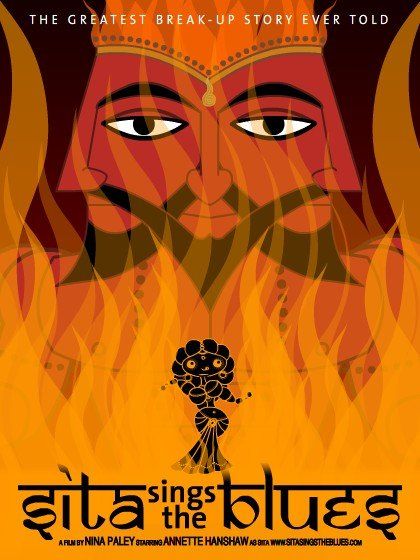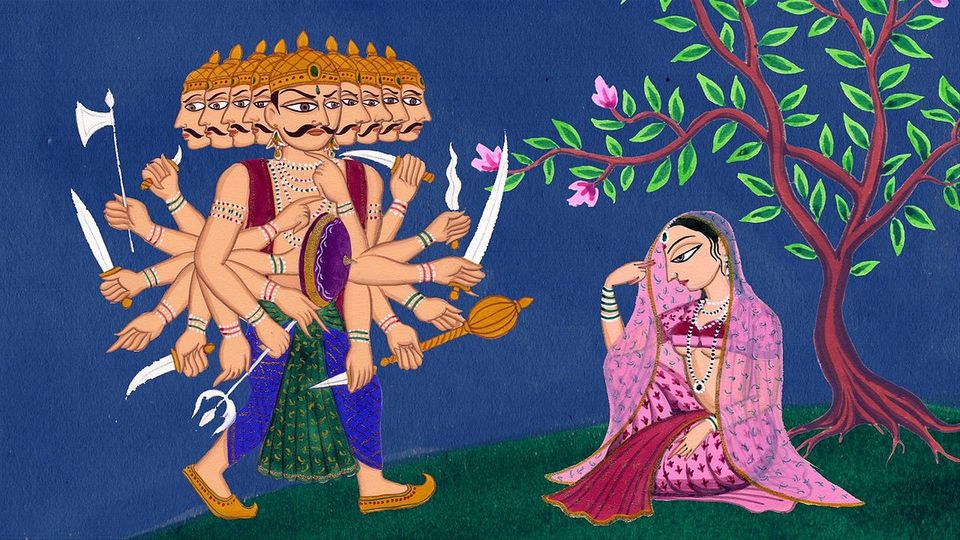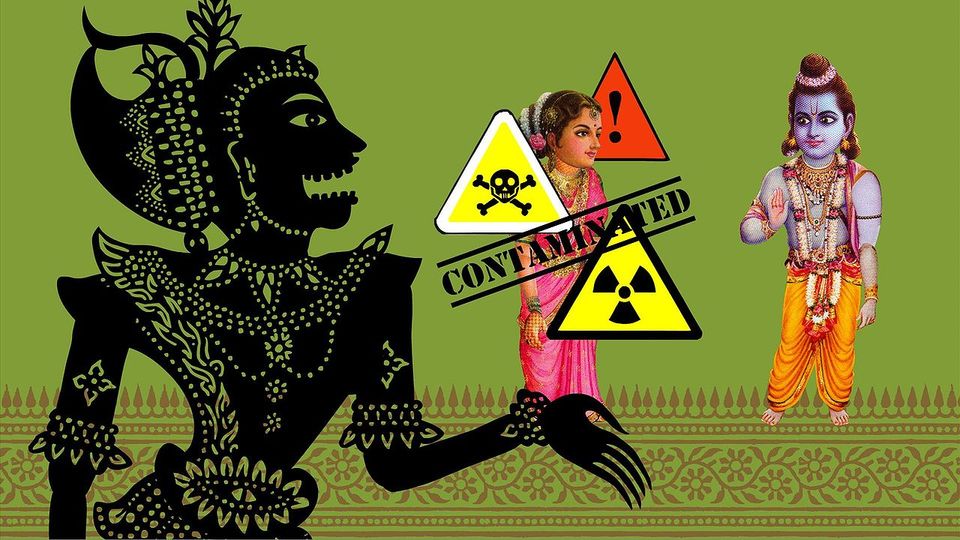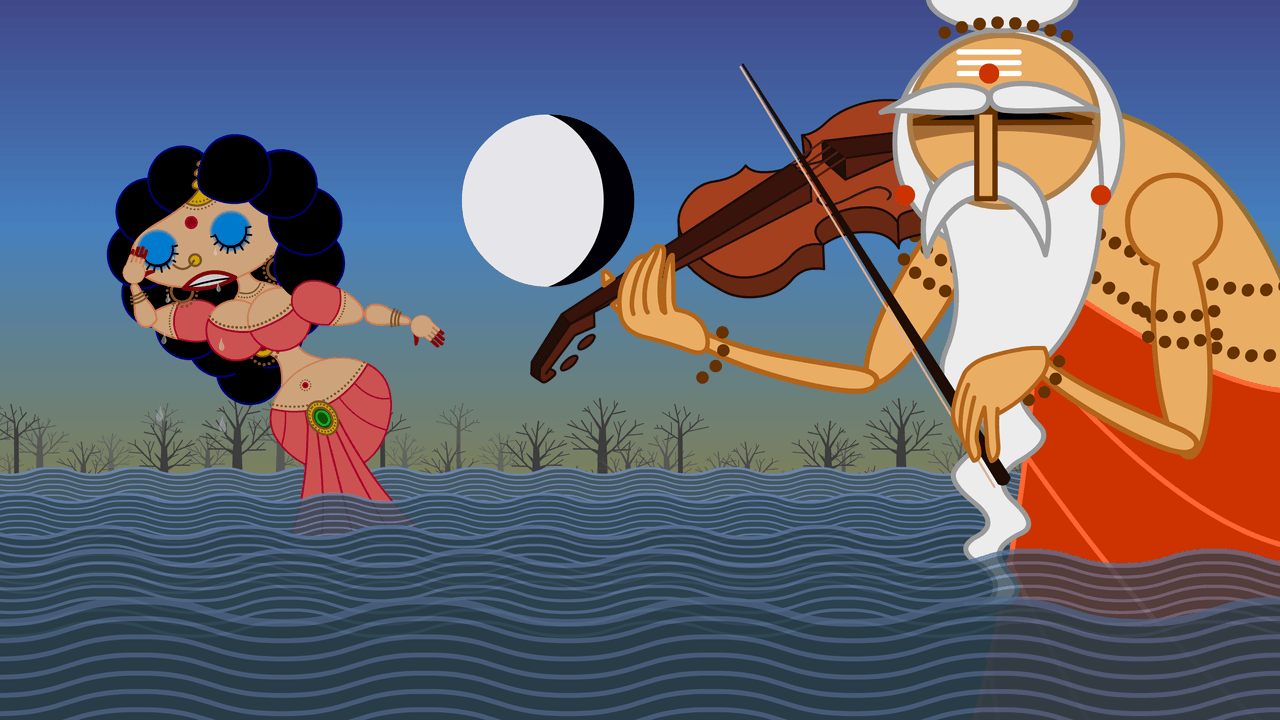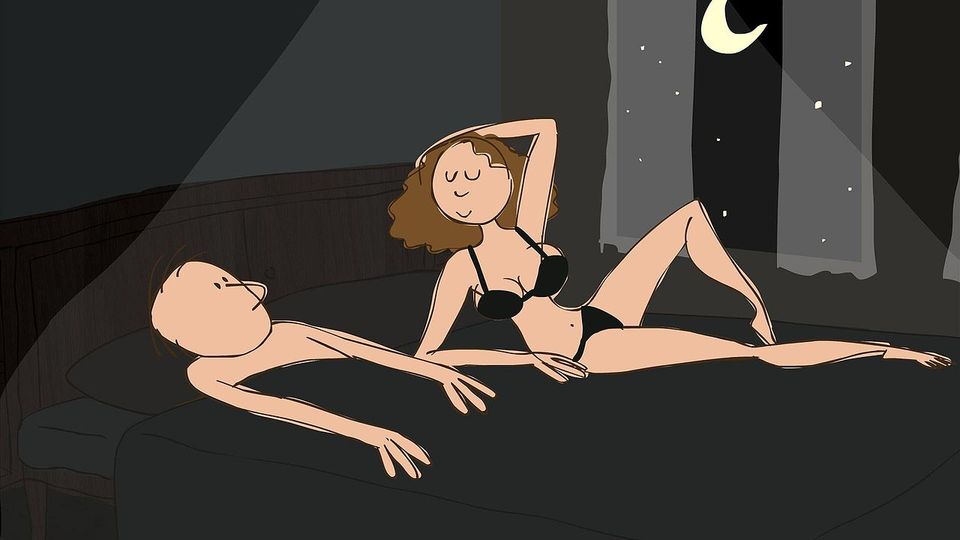SITA SINGS THE BLUES
A musical, animated personal interpretation of the Indian epic the Ramayana.
Sita Sings the Blues is a 2008 American animated musical romantic comedy-drama film written, directed, produced and animated by American artist Nina Paley. It intersperses events from the Ramayana, light-hearted but knowledgeable discussion of historical background by a trio of Indian shadow puppets, musical interludes voiced with tracks by Annette Hanshaw and scenes from the artist's own life. The ancient mythological and modern biographical plot are parallel tales, sharing numerous themes.
Q: What drove you to create "Sita Sings the Blues"?
Nina Paley
: Sita Sings the Blues is a musical, animated personal interpretation of the Indian epic the Ramayana. The aspect of the story that I focus on is the relationship between Sita and Rama, who are gods incarnated as human beings, and even they can't make their marriage work.
And then there's my story. I'm just an ordinary human, who also can't make her marriage work. And the way that it fails is uncannily similar to the way Rama and Sita's [relationship fails]. Inexplicable yet so familiar. And the question that I asked and the question people still ask is, "Why"? Why did Rama reject Sita? Why did my husband reject me? We don't know why, and we didn't know 3,000 years ago. I like that there's really no way to answer the question, that you have to accept that this is something that happens to a lot of humans.
Q: How did you discover Annette Hanshaw's music?
Nina Paley
: I heard her voice for the first time while "sofa surfing" after my break-up. I was staying in the home of a record collector in New York. He had original Hanshaw 78's on his shelf, a friend played 'Mean to Me,' and I was hooked. Her voice is so sweet and vulnerable and without bitterness, even as she sings of heartbreak and man-done-her-wrong. Also it comes from a completely different era, separate from both today and ancient India. Those old songs really show how the story of heartbreak in the Ramayana transcends time and culture.
Source: http://www.sitasingstheblues.com/
A MESSAGE FROM THE CREATOR (Nina Paley)
Episodes from the Ramayana
Episodes with dialogue from the Ramayana are enacted using painted figures of the characters in profile, which strongly resemble the 18th-century Indian tradition of Rajput painting. The Rajput style of brush painting was principally enacted on manuscripts and commonly employed in the telling of epics such as the Ramayana. In the film they serve as a more traditional style of dramatic narrative, although the dialogue is frequently ironic, inappropriately modern or otherwise humorous.
The background in each scene is usually static and the poses of each character are kept minimal, with movement achieved by simply transporting the character across the screen in its set position. Speech is enacted by alternating the set pose of the face with a slightly liquified version where the jaw is lower. ( Source)
Narration and discourse on the Ramayana
Narration and discourse on the Ramayana
Aseem Chhabra, Bhavana Nagulapally, and Manish Acharya provided the voices for three silhouettes, traditional Indian shadow puppets. They link episodes of the Ramayana with a lively, unscripted, discussion of their personal impressions and knowledge of the epic. They provide context and commentary for the story, which has innumerable incarnations and regional variations.
The voices are clearly contemporary and somewhat irreverent, unlike their visualisations, which further establishes the theme of contrast between "ancient tragedy and modern comedy"; Chhaya Natak shadow theatre, for example, was commonly used in retellings of the Ramayana.
During these sections, the ideas and contradictions raised over the course of the puppets' discussions are visualised in animated photographic compositions in the background.( Source )
Musical episodes from the Ramayana
Episodes set to certain songs performed by jazz singer Annette Hanshaw are visualised, with Sita as the singing performer, using the strikingly modern technique of vector graphic animation.
The slick, bold style – driven by digital animation software – is at odds with the somewhat rustic quality of the old musical recordings but allows close synchronisation with the vocals. The smooth, repetitive, side-scrolling movement it effects assists in suspending the musical episode from the more consistent narrative plot.( Source
)
Contemporary parallel
The modern, more personal element to the contemporary part of the story is narrated using the rough, energetic Squigglevision technique of traditional animation. It conveys the kind of restlessness inherent in the story and achieves a more light-hearted, universal tone with its simple, highly stylised renderings of character and environments.( Source )Nina waives all copyright restrictions, as follows:
To the extent possible under law, Nina Paley has waived all copyright and related or neighboring rights to Sita Sings the Blues. This work is published from: United States.
Dear Audience,
I hereby give Sita Sings the Blues to you. Like all culture, it belongs to you already, but I am making it explicit with a Creative Commons Attribution-Share Alike License updated 1-18-2011: CC-0 license ("Public Domain"). Please distribute, copy, share, archive, and show Sita Sings the Blues. From the shared culture it came, and back into the shared culture it goes.
You don't need my permission to copy, share, publish, archive, show, sell, broadcast, or remix Sita Sings the Blues. Conventional wisdom urges me to demand payment for every use of the film, but then how would people without money get to see it? How widely would the film be disseminated if it were limited by permission and fees? Control offers a false sense of security. The only real security I have is trusting you, trusting culture, and trusting freedom.
That said, my colleagues and I will enforce the Share Alike License. You are not free to copy-restrict ("copyright") or attach Digital Restrictions Management (DRM) to Sita Sings the Blues or its derivative works. updated 1-18-2011: Who am I kidding? I'm not going to use our broken legal system to enforce anything. The law is an ass I don't want to ride. I still don't want you to restrict derivatives or attach DRM or misattribute, but I'm not going to sue over it.
Some of the songs in Sita Sings the Blues are not free, and may never be; copyright law requires you to obey their respective licenses. This is not by my choice; please see our restrictions page for more.
There is the question of how I'll get money from all this. My personal experience confirms audiences are generous and want to support artists. Surely there's a way for this to happen without centrally controlling every transaction. The old business model of coercion and extortion is failing. New models are emerging, and I'm happy to be part of that. But we're still making this up as we go along. You are free to make money with the free content of Sita Sings the Blues, and you are free to share money with me. People have been making money in Free Software for years; it's time for Free Culture to follow. I look forward to your innovations.
If you have questions, please ask each other. If you have ideas, please implement them - you don't need my permission or anyone else's (except for the copyright-restricted songs , of course). If you see abuses, please address them, but don't get bogged down in arcane details of copyright law. The copyright system wants you to think in terms of asking permission; I want you to think in terms of freedom. We've set up this Wiki to get things started. Feel free to improve it!
I've got to get back to my life now, and make some new art. Thanks for your support! This film wouldn't exist without you.
Love,
--Nina Paley
28 February, 2009

